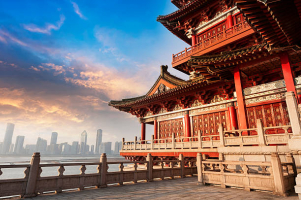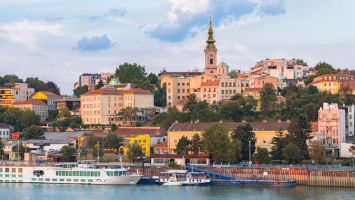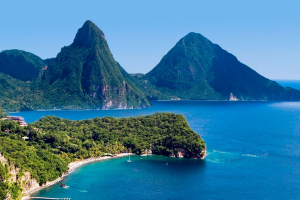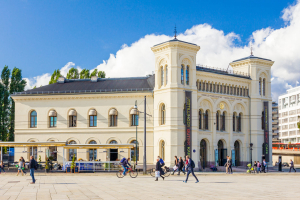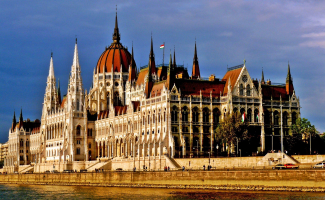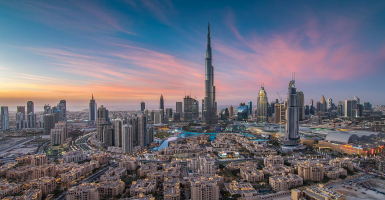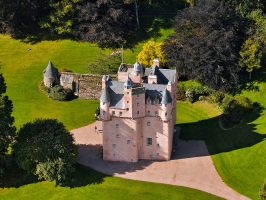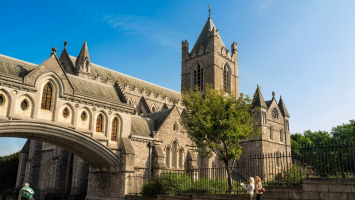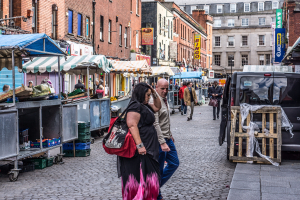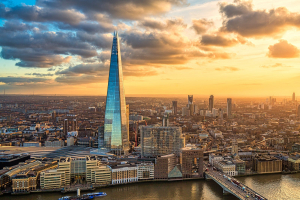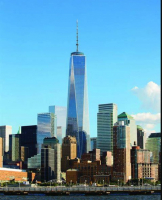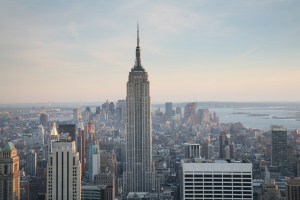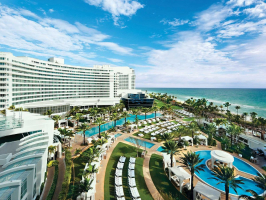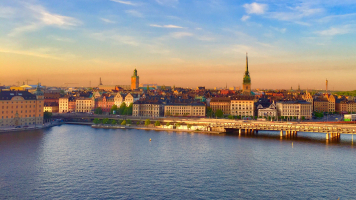Top 12 Must-See Buildings in Dublin
Dublin is the Republic of Ireland's capital and a renowned tourist destination. Unsurprisingly, there are many renowned and iconic structures in Dublin that ... read more...attract visitors from all over the world. Some of them are over 500 years old. These are some of the significant and stunning structures you may see when touring Dublin.
-
The Bord Gáis Energy Theatre (formerly the Grand Canal Theatre) is a performing arts facility in Dublin's Docklands. It is the largest fixed-seat theatre in Ireland. Daniel Libeskind designed it for the DDDA, Joe O'Reilly (Chartered Land constructed it, and Harry Crosbie opened it on March 18, 2010. Bernie and John Gallagher (of Doyle Hotels) purchased the theatre from NAMA in 2014 through their firm, Crownway.
The Bord Gáis Energy Theatre, located on the Grand Canal Dock, blends its historic surroundings with a clean and perfectly executed contemporary glass design. The theatre, which seats over 2,000 people, has already hosted a number of famous sell-out performances, including a Russian State Ballet production of Swan Lake, the award-winning Jersey Boys, and a variety of operas, musicals, concerts, and plays. Since its inception, the Bord Gáis Energy Theatre has attracted over 500,000 people every year, and this figure is expected to rise.
The Bord Gáis Energy Theatre, located near the 3Arena performance venue, also stages a number of yearly concerts. It has already hosted several legendary musicians, including Chris de Burgh and Tony Christie. The Bord Gáis Energy Theatre has numerous huge refreshment shops as well as a bar on each level where you may reserve interval beverages. The Bord Gáis Energy Theatre is centrally placed in Dublin, directly south of the River Liffey, and was purposefully designed to be accessible. Traveling here is simple by car, bus, or the Dublin DART.
Location: Grand Canal Square Docklands, Province Of Leinster, Dublin
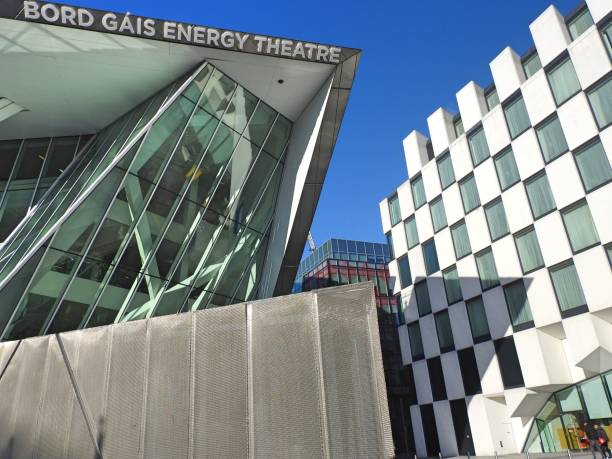
istockphoto 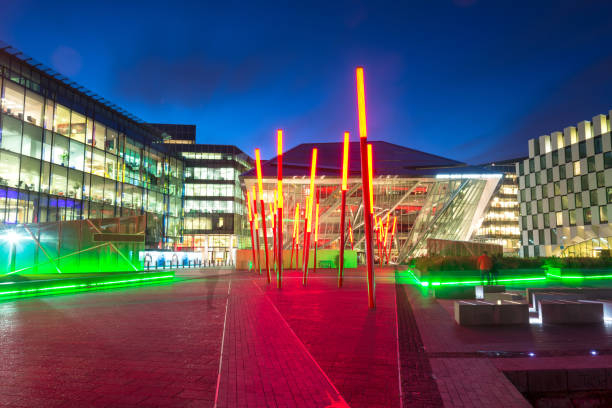
istockphoto -
The Royal Hospital Kilmainham (Irish: Ospidéal Rochta Chill Mhaighneann) is a former 17th-century hospital in Kilmainham, Dublin. The building is presently home to the Irish Museum of Modern Art. Every year on the National Day of Commemoration - the Sunday closest to the 11th of July - the anniversary of the Truce that ended the Irish War of Independence - the President of Ireland, in the presence of members of the Government of Ireland, members of Dáil Éireann and Seanad Éireann, the Council of State, the Defence Forces, the Judiciary, and the Diplomatic Corps, lays a wreath in the courtyard in memory of all Irishmen and Irishwomen.
The Royal Hospital Kilmainham graveyards, including Bully's Acre, are 400 metres to the west. A cross-shaft in the former cemetery may be the remains of a boundary cross associated with a ninth-century monastery located at this site. The monument was designed by Sir William Robinson, Ireland's Surveyor General from 1670 to 1700, and was inspired by the famed Les Invalides in Paris, France. Royal Kilmainham Hospital has been a famous summer music venue in recent years. Blur, Damien Rice, Tame Impala, Kodaline, and Patti Smith have all performed there. The Frames performed on the grounds on the evening of May 28, 2022, before an estimated 10,000 people.
Location: Kilmainham, Dublin, Ireland
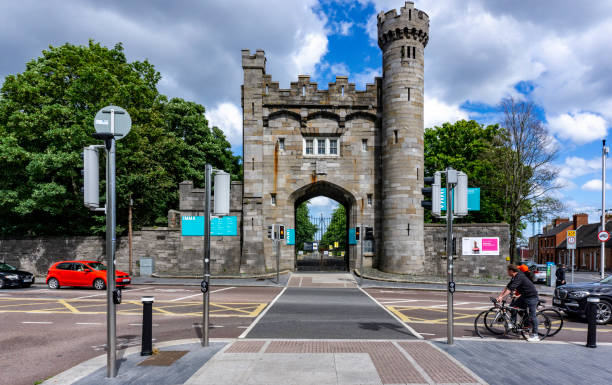
istockphoto 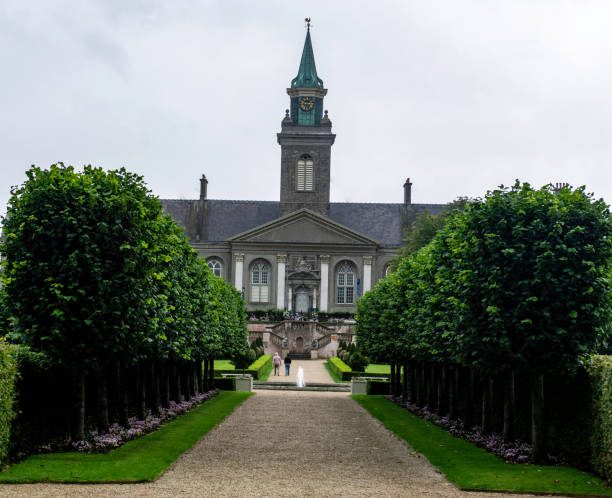
istockphoto -
The Custom House (Irish: Teach a Chustaim) is a neoclassical 18th-century structure in Dublin, Ireland, that houses the Department of Housing, Local Government, and Heritage. It is situated on Custom House Quay on the north side of the River Liffey, between Butt Bridge and Talbot Memorial Bridge. Engineer Thomas Burgh erected the previous Custom House in 1707. (1670–1730). By the late 18th century, however, it was declared inadequate for purpose. The concept for a new Custom House in Dublin came from John Beresford, who became Ireland's first commissioner of revenue in 1780.
The building's original role for collecting customs charges became outdated as the port of Dublin relocated farther downriver, and it was converted into the headquarters of the Local Government Board for Ireland. The Irish Republican Army burned down the Custom House during the Irish War of Independence in 1921 in order to undermine British administration in Ireland by destroying tax documents. The Irish Free State government restored it following the Anglo-Irish Treaty. The dome was restored with Irish Ardbraccan limestone, which is substantially darker than the Portland stone used in the original construction, and the consequences of this repair can still be seen on the building's façade today. This was done to highlight Irish resources.
An Office of Public Works (OPW) staff restored and cleaned the masonry again in the 1980s. The OPW, Department of Housing, Local Government and Heritage, and Fáilte Ireland collaborated to create a tourist experience at the Custom House in November 2021, highlighting the structure's construction, fire, and restoration.
Location: North Dock, Dublin 1, Ireland
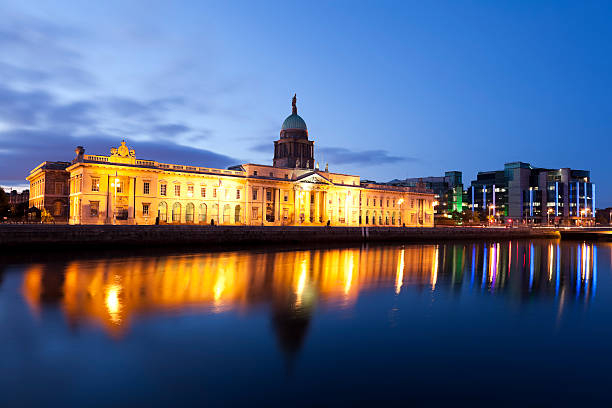
istockphoto 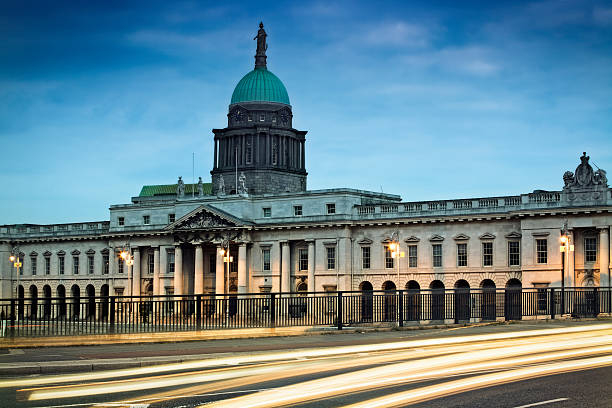
istockphoto -
Dublin Castle (Irish: Caisleán Bhaile tha Cliath) is a former Motte-and-bailey castle that is now a government complex and convention center in Ireland. It was chosen because of its location at the highest point in Dublin. It was the seat of the British government's administration in Ireland until 1922. The majority of the existing structures originate from the 18th century, albeit a castle has been on the site since King John, the first Lord of Ireland. The Castle served as the seat of English, and subsequently British, administration in Ireland under the Lordship of Ireland (1171-1541), the Kingdom of Ireland (1541-1800), and the United Kingdom of Great Britain and Ireland (from 1801 to 1900).
The complex was ceremonially handed over to the newly formed Provisional Government led by Michael Collins following the signing of the Anglo-Irish Treaty in December 1921. It presently accommodates each President of Ireland's inauguration as well as many State functions. The black lake ("Dubh Linn") that gave Dublin its name inspired the construction of the fortress. This pool is located on the lower channel of the River Poddle before it joins the River Liffey; when the castle was built, the Liffey was much bigger, and both rivers successfully guarded the castle. The Poddle now passes beneath the structure.
Today, the area itself is regularly used as an immersive teaching tool, informing both residents and visitors about the region's history and ongoing significance. This Dublin building, located just off Dame Street, initially opened in 1214, with succeeding builds frequently paralleling the need for repairs or a change in occupation.
Location: Dame St, Dublin 2, Ireland
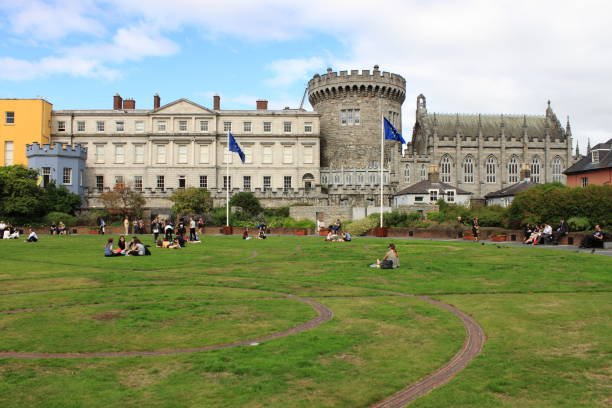
istockphoto 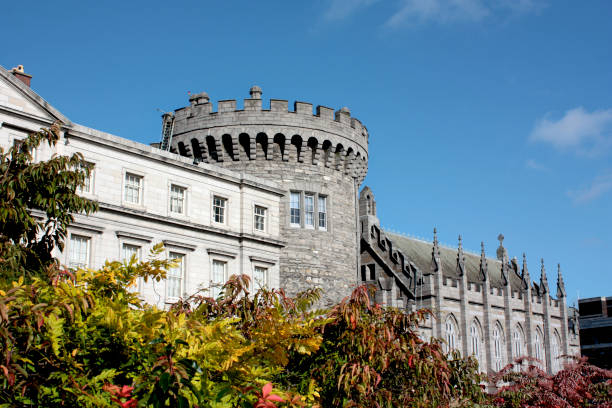
istockphoto -
The Dublin City Hall (Irish: Halla na Cathrach, Baile tha Cliath), once known as the Royal Exchange, is a municipal edifice in Dublin, Ireland. It was constructed between 1769 and 1779 according to the ideas of architect Thomas Cooley and is a significant example of 18th-century architecture in the city. Originally used by the city's merchants, it is now the official seat of Dublin City Council. City Hall is situated on Dame Street, near the southern end of Parliament Street, on Dublin's south side. It is located in front of a portion of Dublin Castle, which served as the seat of British authority in Ireland until 1922.
Surprisingly, the city hall design was available to public comment; of the 62 bids submitted by the government, Thomas Cooley, a London architect, emerged as the winner, beating out James Gandon, the designer of The Custom House. Cooley was later commissioned to construct the Four Courts. The stained-glass dome above, visible once inside, demands you to crane your neck just to take in the entire magnitude of the show. Originally intended to be kept open, the regular Irish rains forced the dome to shut the topmost peak.
Location: Dame St, Dublin, Ireland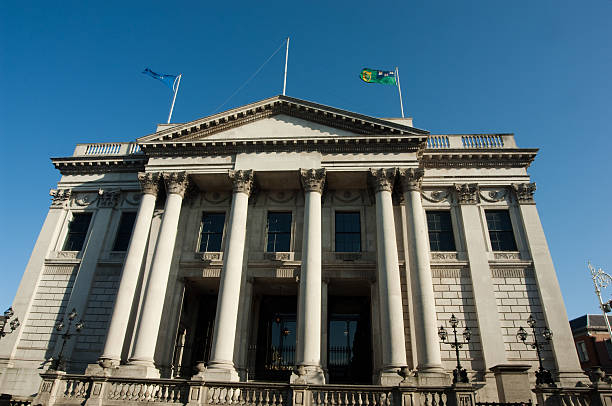
istockphoto 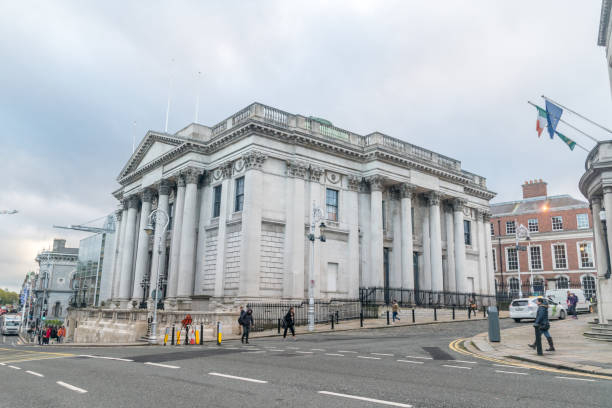
istockphoto -
The Dublin Conference Centre (Irish: Ionad Comhdhála, Baile tha Cliath) is a convention center in Dublin, Ireland. Spencer Dock, where the convention center is located, has a view of the River Liffey. Kevin Roche, an Irish-born American architect, designed it. Construction began in 1998, and the building was completed in 2010. It served as a temporary venue for Dáil Éireann beginning in June 2020 owing to the need to impose social separation due to the COVID-19 epidemic.
The glass exterior and multiple curving walls make the building famous for a variety of architectural features. The structure can accommodate up to 8,000 people in 22 conference rooms, including a 2,000-seat auditorium and a 4,500-square-metre exhibition and banqueting area. It is the world's first carbon-neutral convention center due to the use of low-carbon cement and the purchase of carbon credits in compliance with the Voluntary Carbon Standard to offset unavoidable carbon emissions. It also has a thermal-wheel heat-recovery system and an ice-storage thermal unit to offer building air conditioning.
The Convention Centre in Dublin, in sharp contrast to many of the other buildings on this list, serves as a sleek, contemporary counterpoint to the area's old, antiquated architecture. Even if you only pass by, you'll be impressed by the flawless edifices on its façade. The Dublin Convention Centre, which is frequently lighted when the sun goes down, hosts a regularly rotating series of conferences, conventions, and general and specialized events. The center is situated to many of Dublin's top hotel stays and is listed as one of the Dublin places you can't afford to miss.
Location: Spencer Dock, N Wall Quay, North Wall, Dublin 1, D01 T1W6, Ireland
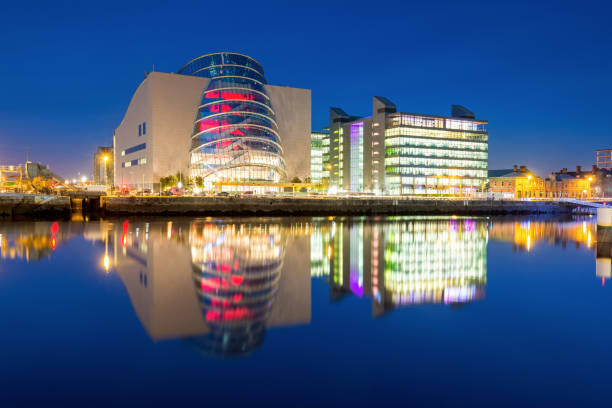
istockphoto 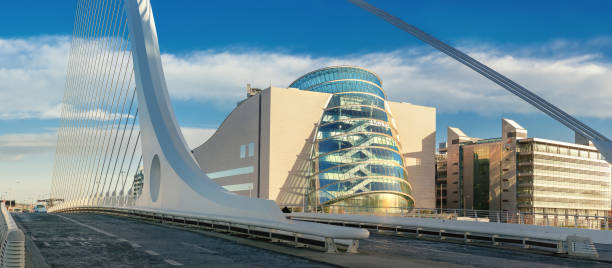
istockphoto -
Busáras is the principal bus terminal in Dublin, Ireland serving Bus Éireann's intercity and regional bus services. Busáras, designed in the International Modern style, is also a stop on the Luas Red Line, at Store Street, just before the terminus at Dublin Connolly train station. The building's official name is ras Mhic Dhiarmada ("Mac Diarmada House"), and it also houses the Department of Social Protection's headquarters. The bottom floors are leased by CIÉ, the parent company of Bus Éireann. ras Mhic Dhiarmada is named for Seán Mac Diarmada, a 1916 Easter Rising leader.
The structure is L-shaped, with two rectilinear blocks of varying heights sitting at right angles, and a circular hall on the bottom level constructed in an International Modern style heavily influenced by Le Corbusier. Some of the design components, such as the wavy concrete canopy that overhangs the concourse, were overseen by British engineer Ove Arup. It was intended to be a multi-functional structure, housing a restaurant, nightclub, cinema, and other services. To generate texture, the building used a variety of materials, including brass, Danish bronze, copper, Portland stone cladding, Irish oak flooring, terrazzo stairways, and mosaics created by Patrick Scott. Some of the original detailing is still visible. Despite popular outrage over the expense and sumptuous look, the station today stands against the Dublin sky as a fairly imposing estate housing everything from terrazzo floor tiles to wood wall panels.
Location: Store St, North Dock, Dublin 1, Ireland
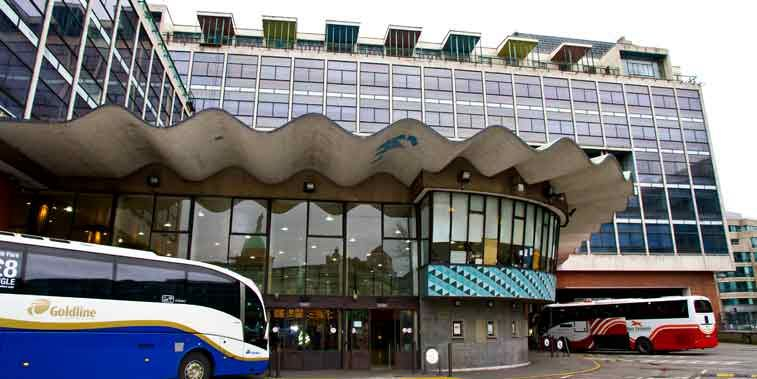
istockphoto 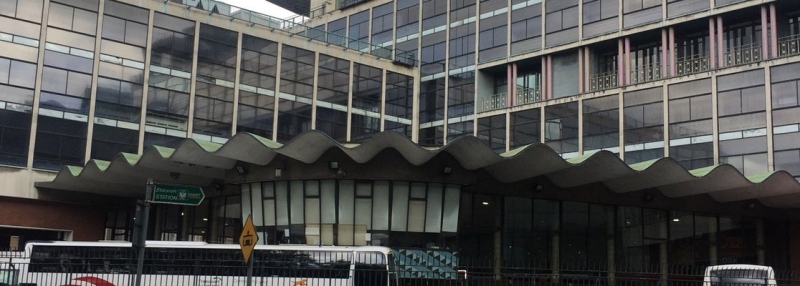
istockphoto -
Aviva Stadium (previously known as Lansdowne Road) is a sports stadium in Dublin, Ireland, having a seating capacity of 51,700. It replaces the original Lansdowne Road Stadium, which was destroyed in 2007, as the home of its main tenants, the Irish rugby union team and the Republic of Ireland football team. The decision to reconstruct the stadium occurred after Stadium Ireland and Eircom Park failed to materialize. In 2009, Aviva Group Ireland agreed to a 10-year naming rights agreement.
The stadium, which is located next to the Lansdowne Road train station, formally opened on May 14, 2010. The stadium is Ireland's first and only UEFA Category 4 stadium, having hosted the Europa League final in 2011. From August 2010 onwards, it also hosted the first Nations Cup, as well as regular home contests for the national rugby team, national football team, and certain home fixtures for Leinster Rugby.
Unlike its predecessor, which was wholly owned by the Irish Rugby Football Union (IRFU), the new stadium is jointly owned by the IRFU and the Football Association of Ireland (FAI) through the Lansdowne Road Stadium Development Company, a 50:50 joint venture (LRSDC). The joint venture has a 60-year lease on the stadium; when it expires, the facility will revert to the IRFU's exclusive ownership.
Location: Lansdowne Rd, Dublin 4, Ireland
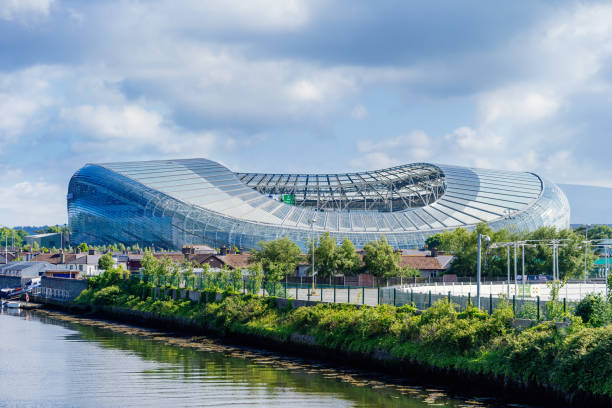
istockphoto 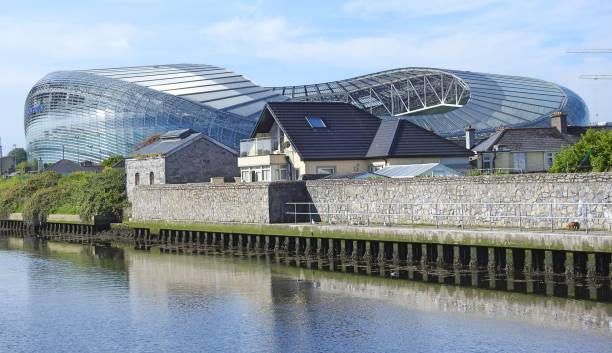
istockphoto -
The Irish Whiskey Museum is housed in a historic building on Grafton Street in the center of Dublin City. Come understand the whole and impartial history of Irish whiskey, as well as its significance in Ireland's stormy past. The Classic tour lasts around one hour, or you may try the Whiskey Blending Experience and take home a tiny bottle of your own mixture. Alternatively, come for a Whiskey tour and Brunch. On weekends, visitors may attend a variety of activities.
Whiskey is so much a part of the Dublin way of life that the Irish Whiskey Museum is located in the city! Of course, there are interactive displays on the grounds, and all visitors are given to an immersive whiskey tasting experience at the end of the museum tour. The Irish Whiskey Museum in Dublin, a two-hour experience from start to finish, may successfully assist you conquer any rainy day, substituting damp grounds with warm, dry interiors and the comfort of a company while you drink on, and learn more about, the whiskey way of life.
Location: 119 Grafton Street, Dublin, D02 E620, Ireland
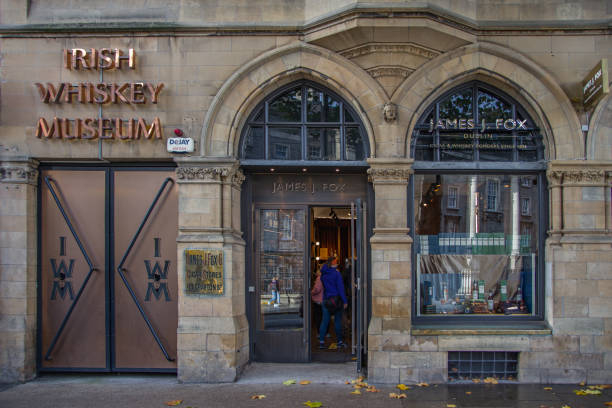
istockphoto 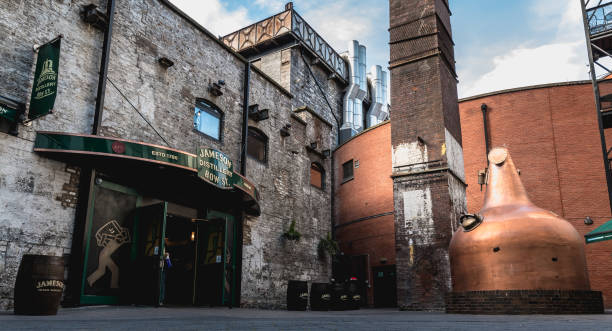
istockphoto -
The Four Courts, located on Inns Quay in Dublin, is Ireland's most important courthouse. The Supreme Court, the Court of Appeal, the High Court, and the Dublin Circuit Court all have their main offices in the Four Courts. The building also hosted the Central Criminal Court until 2010, which is currently located in the Criminal Courts of Justice complex.
The structure was formerly home to four superior courts: Chancery, King's Bench, Exchequer, and Common Pleas, thus the name. Courts were established for the new Irish Free State under the Courts of Justice Act 1924, with the Supreme Court of Justice, presided over by the Chief Justice, replacing the Court of Appeal, and a reconstituted High Court of Justice, presided over by the President of the High Court, continuing the jurisdiction of the old High Court. Following a vote in 2013, a new Court of Appeal was formed in 2014, essentially taking over the appellate authority of the Supreme Court and the former Court of Criminal Appeal. The civil division is housed at the Four Courts.
This Dublin structure was not called for the four courts that now use it; rather, it was named after the building's previous four occupants: the courts of King's Bench, Chancery, Common Pleas, and Exchequer. Thomas Cooley's ideas were implemented at Four Courts, with construction commencing in 1776. After Cooley died in 1784, Architect James Gandon took up building tasks and provided the present product appreciated by so many in Dublin today.
Location: Inns Quay, Dublin, Ireland
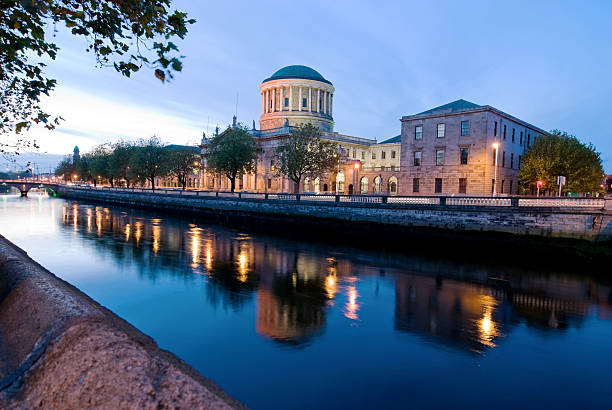
istockphoto 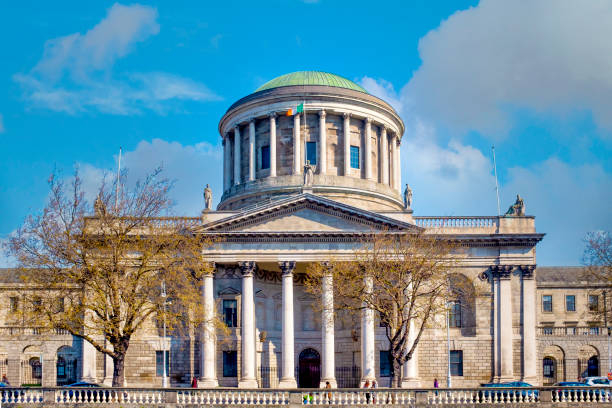
istockphoto -
St Patrick's Cathedral is Dublin's second biggest cathedral, behind only Christ Church Cathedral in size. This iconic Dublin structure was likewise built about a thousand years ago. As a Roman Catholic church, it is today the Church of Ireland National Cathedral. St. Patrick's Cathedral is well known for its choir, which was created more than a century ago and is still in use today.
A variety of public national celebrations are held at the cathedral. Every November, Ireland's Remembrance Day rituals are held there, organized by the Royal British Legion and attended by the President of Ireland. Its carol liturgy (the Service of Nine Lessons and Carols), held twice a year, notably on December 24th, is a vibrant aspect of Dublin life. The cathedral holds the graduation ceremonies of Technological University Dublin on Saturdays in October.
It is one of the structures in Dublin that has stood since antiquity, along with Christ Church Cathedral. It was planned to be the principal cathedral because sermons are held every Sunday as well as Monday through Friday. The Christ Church Cathedral, however, was vehemently opposed.
Location: St Patrick's Close, Patrick Street, Dublin 8, Ireland
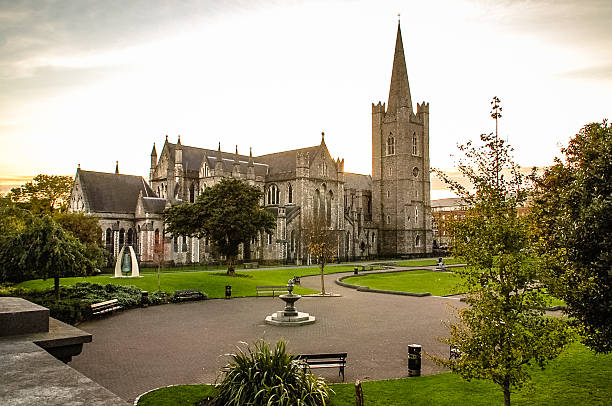
istockphoto 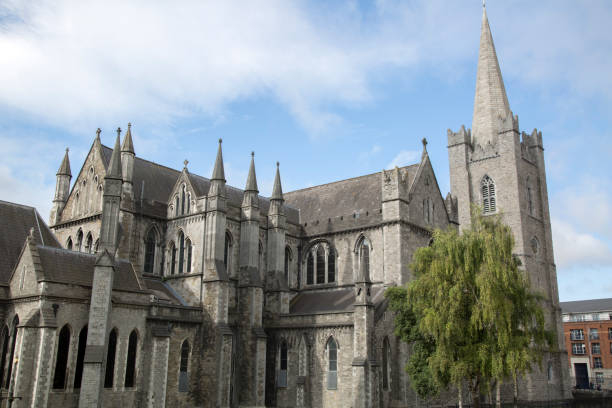
istockphoto -
Kilkenny Fortress is a castle in Dublin, Ireland that was erected in 1195 to control a fording point of the river Nore as well as the intersection of many routeways. It was a Norman emblem, and in its original thirteenth-century shape, it would have been a major component of the town's defenses, with four great round corner towers and a wide ditch, some of which can still be seen today on the Parade.
Arthur Butler, 6th Marquess of Ormonde, surrendered the castle to the Castle Restoration Committee for £50 in 1967 on behalf of the people of Kilkenny. The Office of Public Works currently manages the castle and grounds, and the gardens and parks are available to the public. The Parade Tower serves as a convention center. The castle has hosted award and degree ceremonies for graduates of the National University of Ireland, Maynooth's Kilkenny Campus since 2002.
In ancient times, it was a medieval fortress. However, it is now used as a hotel with around 140 rooms. Guests can select from a variety of accommodation kinds, ranging from castle bedrooms to lodge bedrooms. You may book accommodations for yourself and your family while admiring the vista from inside and outside the castle. The rooms have amenities such as free WiFi. Kilkea Castle is one of Dublin's most recognizable structures. The ancient structure gives you the feeling of living in a castle while yet providing modern conveniences.
Location: Kilkenny, Dublin, Ireland
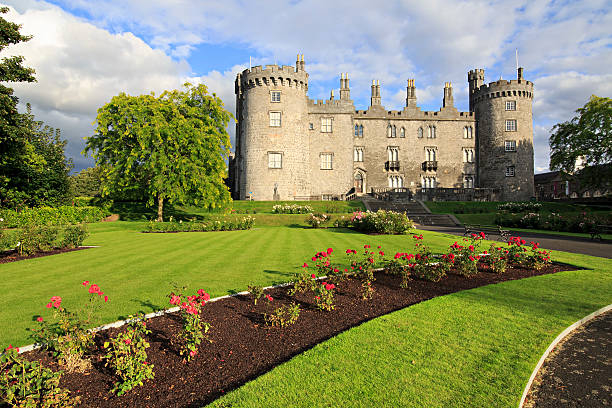
istockphoto 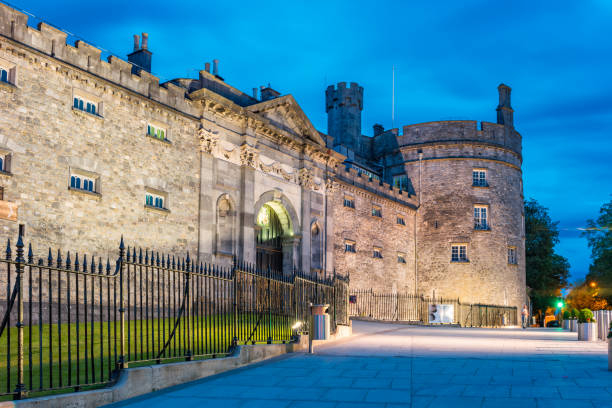
istockphoto















